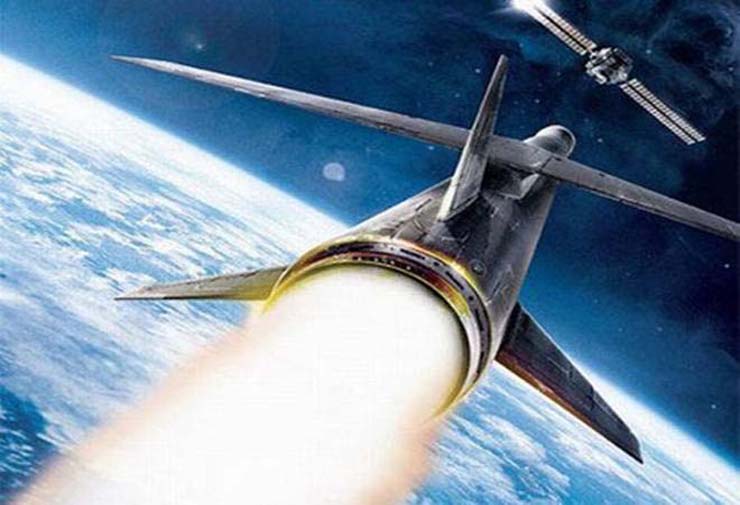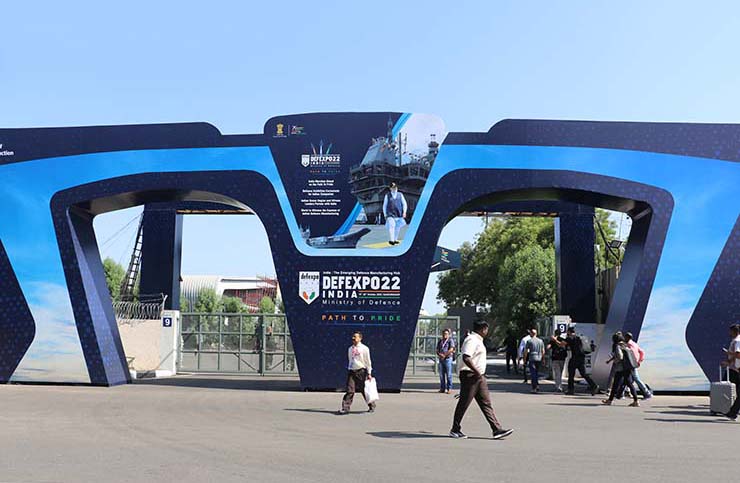
“Military strength cannot be built overnight. The process of developing indigenous military technologies and weapon systems takes a much longer time. Building organisations capable of taking up such challenging tasks takes longer still,” says author Ravi Kumar Gupta in his book, ‘DRDO: Institutions That Shaped Modern India’.
Ravi Kumar Gupta, who retired as a senior scientist of Defence Research and Development Organisation (DRDO), was also the Director (Public Interface) of India’s premier defence establishment, which was established in India in 1958, as the Defence and Science Organisation (DSO).
In his well-researched book, Gupta has written how ‘import mania’ beside the apathy of successive governments, bureaucracy and armed forces towards defence R&D (Research and Development) made India the biggest importer of arms in the world.
But things are changing at a rapid pace now. India is now exporting weapons to the world even though it still remains the second-largest importer of arms. While India is becoming ‘aatmanirbhar’ (self-reliant) in defence sector, its defence exports have risen exponentially in the past four-five years. Indigenous weapons and military platforms are replacing ageing fighter jets at forward air bases. India’s arch-rivals are hell-bent on conspiring to know the secrets of indigenous missiles which can create havoc in the battlefield.
All this is reflected in three major recent developments (this will be discussed threadbare below).
Three factors
First is the export of arms and ammunition by India to the remote Caucasian country Armenia:A video of the consignment passing through the Iranian corridor has gone viral recently on social media.
Second, the deployment of the indigenous fighter jet LCA Tejas at a forward location base in Jammu and Kashmir.
Third, though not good news, is the arrest of a senior DRDO scientist on the charges of breaching the Official Secrets Act after being set up in a ‘honey trap’ by Pakistani intelligence agencies.
First let’s take the case of defence export of indigenous weapons and platforms designed, developed and manufactured by Indian establishments and Defence PSUs (Public Sector Units). The whole world was shocked when Azerbaijan claimed that India is fuelling the already tense situation in the region. To boost its claims, Azerbaijan (media) released a video alleging that an Indian convoy carrying arms and ammunition for the neighbouring (enemy) country Armenia had passed through the Iranian corridor.
Armenia and Azerbaijan were entangled in a 45-day-long war in the year 2020 over a disputed area of Nagorno-Karabakh. Though Russia intervened and brokered a peace deal between the two warring countries, tension still prevails between these countries.
Last year, in September (2022), Armenian Defence Minister Suren Papikyan visited India to witness the biennial DefExpo held in Gandhinagar, the capital of Gujarat. During his visit, Papiyan met his Indian counterpart Rajnath Singh and both countries agreed to a defence deal. Under the agreement, India had to export the indigenous multi-barrel rocket launcher system Pinaka to Armenia. Though the number of Pinaka batteries remained a secret, it’s believed that at least four were to be exported to Armenia and the deal was worth Rs 2,000 crores.
Pinaka
Pinaka was developed by the DRDO in the mid-90s and manufactured by Ordnance Factory Board (OFB). Named after the bow of Lord Shiva, Pinaka has been guarding the Indian borders since then. In the year 2019, the DRDO, while enhancing the range and accuracy, converted Pinaka into a missile system. Now the range of Pinaka is 75 km and it can fire 12 rounds in a span of just 44 seconds. Pinaka is widely used to destroy enemy bunkers and defences.
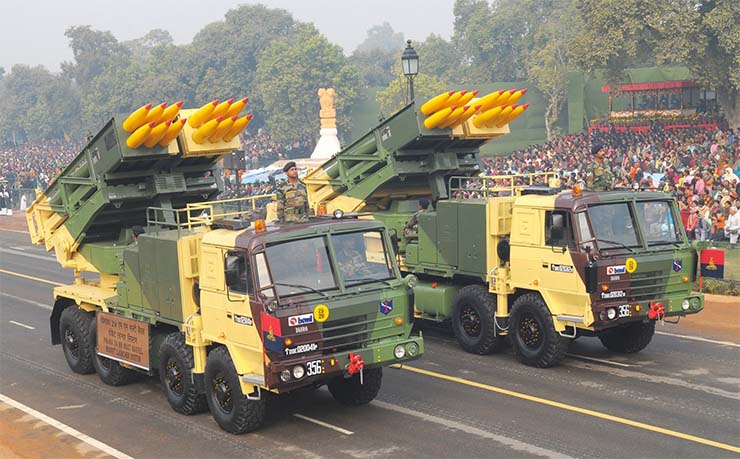
In September 2022, India also inked a deal with Armenia for Truck-mounted-guns. In a major boost to the private sector in defence exports, India’s Kalyani Group has exported these moving artillery guns to Armenia. In the viral video of an Indian convoy in Iran crossing the Armenian border check post, these truck-mounted guns covered with blue polythene can be seen on trawlers (big trucks).
But this was not the first time that India had exported weapons to Armenia. In the year 2016, India exported four weapon-locating radars ‘Swathi’ to Armenia as well. These weapon-locating radars are also designed and developed by the DRDO in conjunction with BEL, Bharat Electronics Ltd, another Defence PSU.
Before being exported to Armenia, these Swathi radars had proved their mettle at the LoC (Line of Control) against the Pakistan Army. The Indian Army, equipped with these Swathi radars, made pinpoint attacks on Pakistani gun positions reducing them into rubbles (this was prior to the ceasefire agreement inked between India and Pakistan in February2021).
At the height of tensions with China in the Eastern Ladakh post-Galwan Valley clash, the Indian Army had also procured six additional regiments of Pinaka MBRL system as well as Swathi radar system for deployment along the Line of Control (LAC).
Pinaka, Kalyani Truck-mounted guns and Swathi radars are not the only indigenous weapons and military equipment to be exported by India. ‘Prime strike weapon’ BRAHMOS has also been on the list of military supplies to friendly foreign countries.
Deal with the Philippines
In the month of January this year, India signed an agreement with the Philippines for the export of BRAHMOS missiles. Developed jointly with Russia in India, BrahMos Aerospace is a subsidiary company of the DRDO. Under production since the mid-90s, BRAHMOS recently celebrated its silver jubilee.
BRAHMOS is tipped as the world’s only supersonic cruise missile with a speed of 2.8 mach and a range of 290 km. Named after the Indian River Brahmaputra and Russian Moskva, BRAHMOS is in the arsenal of all three armed forces of India.
While the Artillery of the Indian Army has BRAHMOS deployed along both LoC and LAC, Sukhoi, the frontline aircraft of the Indian Air Force (IAF), are also now equipped with them enhancing the operational capabilities. Indian warships too are now equipped with supersonic cruise missiles, completing the BRAHMOS triad on land, waters and sea.
The BRAHMOS-NG
The submarine version of BRAHMOS is also developed by the company besides a smaller and more lethal version, the BRAHMOS-NG.
However, India’s pride possession has also invited neighbours’ envy. Both China and Pakistan want to ‘decode’ BRAHMOS but all attempts have been futile so far. Pakistan has even resorted to old spying gimmicks of honey-trap.
In the month of May this year, the Anti-Terrorism Squad (ATS) of Maharashtra Police arrested a senior DRDO scientist on the charges of breaching the Official Secrets Act. The accused, Pradeep Kurulkar was charged with leaking secret information related to missile systems of India to a Pakistani intelligence operative. This operative, named ‘Zara Dasgupta’ from the UK, had befriended Kurulkar on social media and wanted specific information about BRAHMOS.
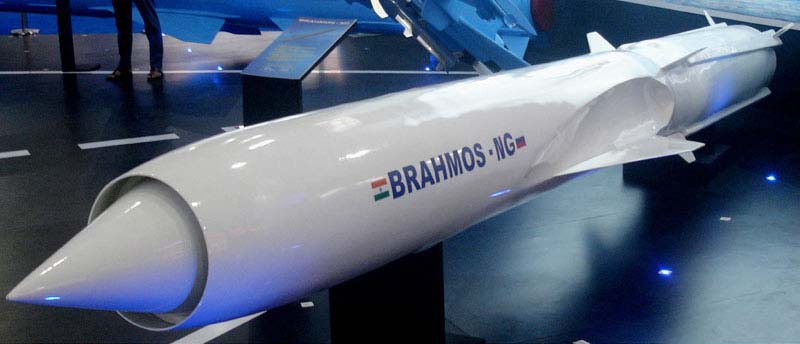
The reason for this lies in a last year incident when a BRAHMOS missile ‘accidentally’ fell in Miyan Channu area of Pakistan close to the Bahawalpur area. Bahawalpur houses the headquarters of the terror group Jaish-e-Mohammad which carried out the dastardly attack on Pulwama in February2019. Although the Pakistan Army claimed to have ‘tracked’ the flight path of BRAHMOS, the reality was that Pakistan came to know about the missile only when it fell in Miyan Channu area. Since the supersonic cruise missile was without a warhead (sans explosives), it didn’t create much destruction but Pakistan was miffed for the violationof international flight safety protocols.
Experts believe that China might do ‘reverse engineering’ of this BRAHMOS missile that fell in Pakistan as the latter doesn’t have the capability or the funds to carry out research on it. China is also perplexed after BRAHMOS reached its backyard of the South China Sea in the Philippines. China fears that BRAHMOS can make routes in other ASEAN countries too which have disputes with China in the disputed South China Sea.
Surging defence exports
While India is making strides in military diplomacy through ‘friendship’ with the enemy’s enemy, defence exports have also been the driving force behind the new defence policy. The Philippines and Vietnam both have disputes with China. Similarly, Azerbaijan is considered close to Pakistan (and Turkey).
Before being exported to Armenia, these Swathi radars had proved their mettle at the LoC against the Pakistan Army. The Indian Army, equipped with these Swathi radars, made pinpoint attacks on Pakistani gun positions reducing them into rubbles (this was prior to the ceasefire agreement inked between India and Pakistan in February 2021).
India’s defence exports have sky-rocketed from a meagre Rs 686 crores in 2013-14 to a whopping Rs 16 thousand crores in the last financial year (2022-23), a jump of around 334 percent. India projects defence exports worth Rs 40 thousand crore by 2026.
If India has jumped from the biggest arms importer list to among the top 25 defence exporters in the world, this has largely been possible because of the DRDO and other defence-PSUs (corporates).
In the past couple of years, the DRDO has successfully tested a record number of tactical and strategic missiles, Prithvi, Akash, Astra, Amogh, Agni (ICBM), BRAHMOS-NG, QRSAM, Rudram (anti-radiation), and Shaurya, to name a few.
ASAT capability
However, DRDO became a worldwide name when India successfully neutralised a satellite in space with its anti-satellite (A-SAT) missile on 27th March 2019. Named ‘Mission Shakti’. This demonstrated “DRDO’s technical prowess and capability to protect nation’s assets in space, the fourth dimension of warfare.” India became the fourth country after the US, Russia and China to have ASAT capability.
Another masterpiece of DRDO and Indian Defence PSU is indigenous Light Combat Aircraft (LCA) Tejas which slowly but steadily is creating ripples globally. After the LCA project stretched for about 25 years and then the reluctance on the part of the ‘users’ to induct it for operational purposes, Tejas has now come out of the age.
On the 24th anniversary of Kargil Vijay Diwas last month (26th July), the IAF deployed a detachment of LCA Tejas at Awantipora forward base in Jammu and Kashmir. Since the MiG-21 ‘Bison’ squadron (‘Sword Arms’) stationed at Srinagar retired last year in September, J&K was without a fighter squadron.
The Srinagar-based 51 Squadron was the same as Wing Commander Abhinandan Vardhaman’s who had successfully shot down Pakistan’s F-16 fighter jet in a dogfight in the aftermath of the Balakot air strike. India had started the LCA project to replace ageing MiG-21s which had poor safety records earning the badge of ‘flying coffins’.
LCA Tejas induction
In the year 2016, LCA Tejas was inducted into the IAF with the first squadron coming up at Sulur air base near Coimbatore (Tamil Nadu). Another squadron of LCA Tejas was also deployed at Sulur.
DRDO’s Aeronautical Development Agency (ADA) and Hindustan Aeronautical Ltd (HAL) have co-developed LCA Tejas and are soon coming out with advanced versions like LCA MK-1A and LCA MK-2 (MWF).
The IAF has already inked a deal with HAL for 83 Mk-1A aircraft and is likely to roll them out next year (2024). Recently, during PM Modi’s US visit, HAL signed an agreement with US aviation company GE Aerospace to build F-414 aviation engines for LCA. Mk-2 under the ‘Make in India’ flagship programme.
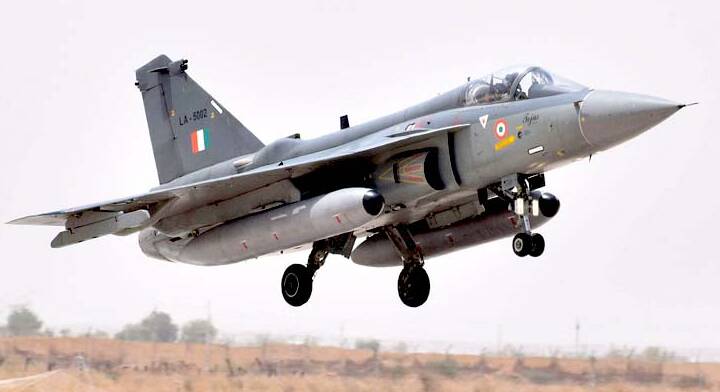
Argentina in talks with India for LCA fighter jets
Besides taking part in various international air shows and air exercises, LCA has a demand in the international market too. Argentina is in talks with India to procure LCA fighter jets. Last month, Argentine Defence Minister Jorge Tiana visited the HAL facility in Bengaluru and had a close look at LCA Tejas. Argentina also signed a ‘Letter of Intent’ with HAL to procure indigenous choppers.
Some other countries, like Egypt, have also shown interest in the indigenous aircraft.
Both ADA and HAL are also making strides with LCA (Navy) and TEDBF (Twin Engine Deck Based Fighter) for the Indian Navy as well as India’s own 5th generation stealth aircraft AMCA (Advance Medium Combat Aircraft). While TEDBF is for Indian aircraft carriers, LCA (N) will be used mainly for the training of naval pilots.
But the real test of DRDO, defence PSUs and the private sector will be in the field of critical and destructive technology. With the emergence of hybrid warfare, cyber warfare and CBRN (Chemical, Biological, Radiological and Nuclear) warfare are here to stay. First in the Armenia-Azerbaijan war and now in the ongoing Russia-Ukraine war, it is certain that drones, UAVs and energy (Laser) weapons besides space warfare is where DRDO has to gear up for future wars.
-The writer is a senior defence journalist and War-author. The views expressed are personal and do not necessarily reflect the views of Raksha Anirveda







